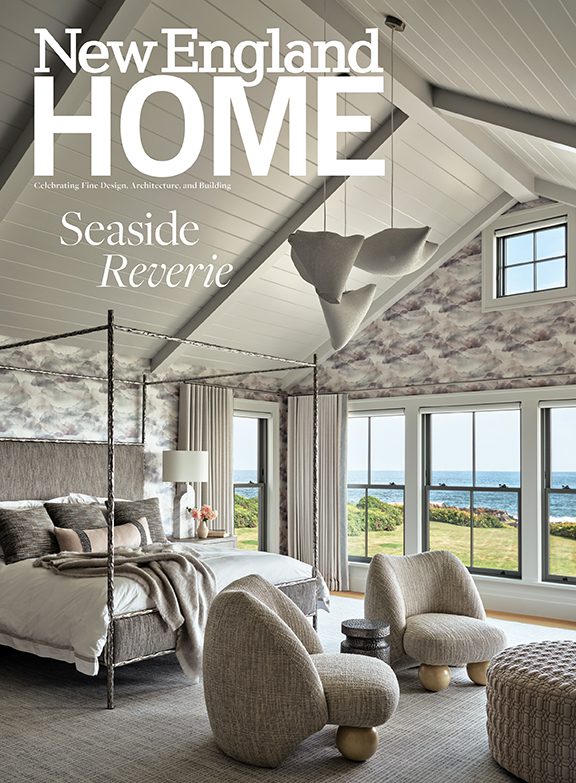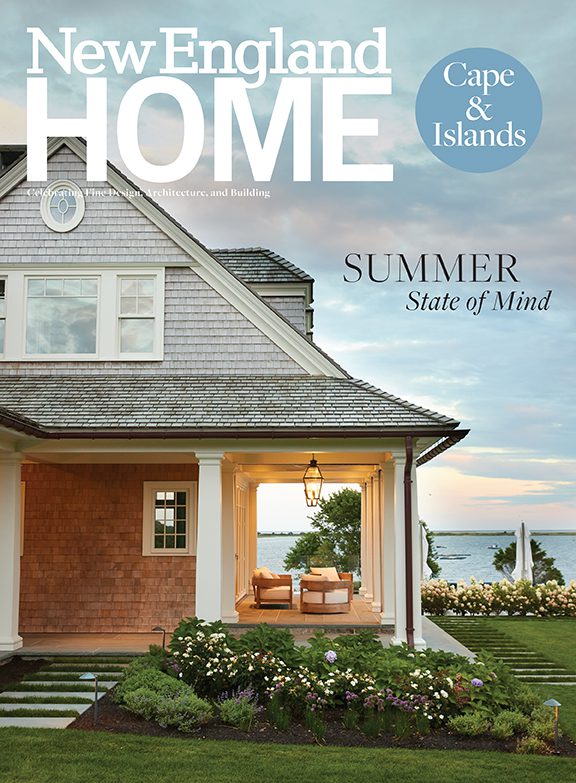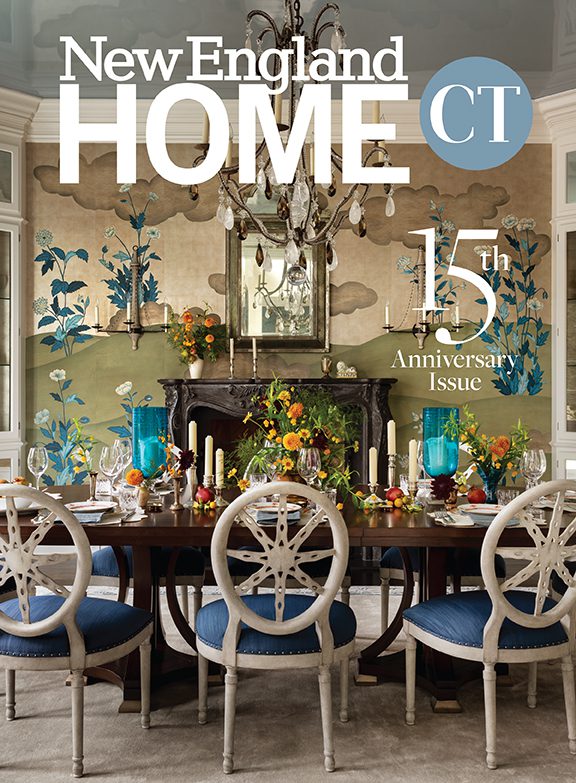View Finder
July 12, 2012
Text by Maria LaPiana Photography by Miki Duisterhof and Warren Patterson
Feathers ruffle easily on the Cape when folks mess with old ship captains’ homes—no matter how sea-worn those houses may be. Maritime legacy is sacrosanct, after all, and, says architect Tom Catalano, “Let’s face it, people just don’t like change.”
So when the Boston-based Catalano proposed razing a battered old place on a prized piece of waterfront in Chatham, at the behest of a couple who wanted to build new, feathers flew.
Catalano’s clients were “pilloried in the newspapers,” the architect says, for daring to contrive what people worried would be a “McMansion” on such hallowed ground. Insults were hurled, and ill will tainted the couple’s enthusiasm for a time. “We knew we would catch heat for wanting to tear down the original home,” says the husband, “and we did.”
But in making a carefully reasoned decision, he says, they had six architects take a look; to a person they agreed it couldn’t be saved. So in the end, as zoning laws didn’t actually prohibit it, the captain’s house came down.
“It was quite simple,” says Catalano. “My clients had fallen in love with the idea of a traditional home on Main Street, so we had to come up with a design that was respectful of the area and surrounding architecture. We made sure it was appropriately sited and tasteful,” he adds, and the controversy eventually faded away. It didn’t hurt that the husband had been spending summers in town since he was a boy, or that he and his wife had owned homes here for thirty years.
“We knew at once when we saw the site that it was a very rare thing. It’s breathtaking, really. The lighthouse, the sandy beach directly on the Atlantic Ocean,” says the husband. “I knew we had to own it.”
The 5,000-square-foot home that Catalano designed is a paean to vernacular architecture. From the street side it’s all shingles and stone, shutters and symmetry. With more than a nod to houses that have graced New England forever, it sports a carved entry, stone quoining and a widow’s walk perched between twin chimneys.
But if there’s one thing that trumps tradition here, it’s that view. The modified Cape has a rear elevation and floor plan informed through and through by mesmerizing, picture-perfect water views. While from the front the house looks like a classic two-story, the back reveals a third, lower level that takes advantage of the contours of the site and opens onto a pool and entertaining terrace. If the façade feels historical, the back of the house is a celebration of modern living, of decks and wide windows that open up to embrace sea and sky.
Having worked successfully with her on several projects in the past, including a Boston penthouse and a cottage in Antigua, the homeowners called on a good friend, interior designer Pamela Ryder of Washington, D.C., to furnish the home. Ryder collaborated with the architect and builder from the ground up; the husband says the team “got it” from the get-go.
Not surprisingly, it was “the view, the view, the view” that Ryder was asked to honor and respect. “They wanted the interiors to be understated, so they wouldn’t compete with—but rather would complement—the tide, the light, the seals and fishing boats, the quiet beauty they enjoy,” she recalls.
The home is built high on the coast, some thirty-five feet above the water, so the seascape is hard to miss. But the challenge, says Catalano, was capturing not just the view to the east but the one from the south as well. So the house is ell-shaped, with the family room and master suite located inside the ell, affording them the best possible vantage points.
The vista unfolds instantly upon entering from the street. “Nothing in front tells the whole story of this house,” says Ryder. “But once you get inside: Surprise!” The eye is drawn straightaway into the dining room, over the table, to the broad deck and beyond, into the blue. The chandelier was designed by Ryder and fabricated from iron, twisted and turned to create an airy centerpiece that commands attention but allows for transparent peeks at the water. “You come in and it’s just like a magnet,” she says.
The formal entry has a compass rose on the oak floor (it’s actually engineered wood, another surprise). The wide boards were installed over a radiant heat system throughout the home to keep chilly coastal weather at bay.
There are indoor views, too, as carefully crafted vignettes delight at every turn. And there’s texture in this home—lots of it: upholstered chairs, plush rugs, rich drapes, striéd wallcoverings, polished wood. The living room is tradition personified: white tufted sofa, slipper chairs, glass-topped coffee table, painted seascape in a gilded frame. It is expertly layered, as is every other room, even the far less formal kitchen/great room, library and lower-level family room. There’s a sophisticated, yet organic, quality to all of the fabrics and floor coverings, and the spaces—one more pleasing than the next—are almost all bathed in shades of blue. Who knew there were so many?
Gracious hosts with grown children, the couple wanted a beautiful but livable home, with no fussy off-limits rooms. Ryder interpreted that overall sensibility as one of comfort and elegance (a perfect marriage, in her opinion), with noteworthy details.
Catalano clearly got that memo. “There isn’t a room in the house with the same ceiling,” says the husband, with a mixture of pride and awe.
Determined that history be repeated within, the architect commissioned the hand-carved pineapple finals on the traditional Colonial Revival staircase “as an homage to the significance of ship captains,” he says.
“You can call the style transitional, I suppose, but it’s more than that,” says Ryder. “We used tailored and sophisticated pieces—antiques, reproductions, custom pieces, as well as some designed and crafted by artisans.”
Everywhere there is evidence of a light, but artful hand.
“I have to say I am so thrilled that the owners came with superb taste—and lots of patience that allowed us to select the finest furnishings,” says Ryder. “Truly, there were no holds barred,” she says, and it shows.
Project Team
Architecture: Catalano Architects
Interior Design: Pamela Gaylin Ryder Interiors
Builder: Kent Building Company
Landscape design: Stephen Stimson Associates
Share
![NEH-Logo_Black[1] NEH-Logo_Black[1]](https://b2915716.smushcdn.com/2915716/wp-content/uploads/2022/08/NEH-Logo_Black1-300x162.jpg?lossy=1&strip=1&webp=1)
























You must be logged in to post a comment.